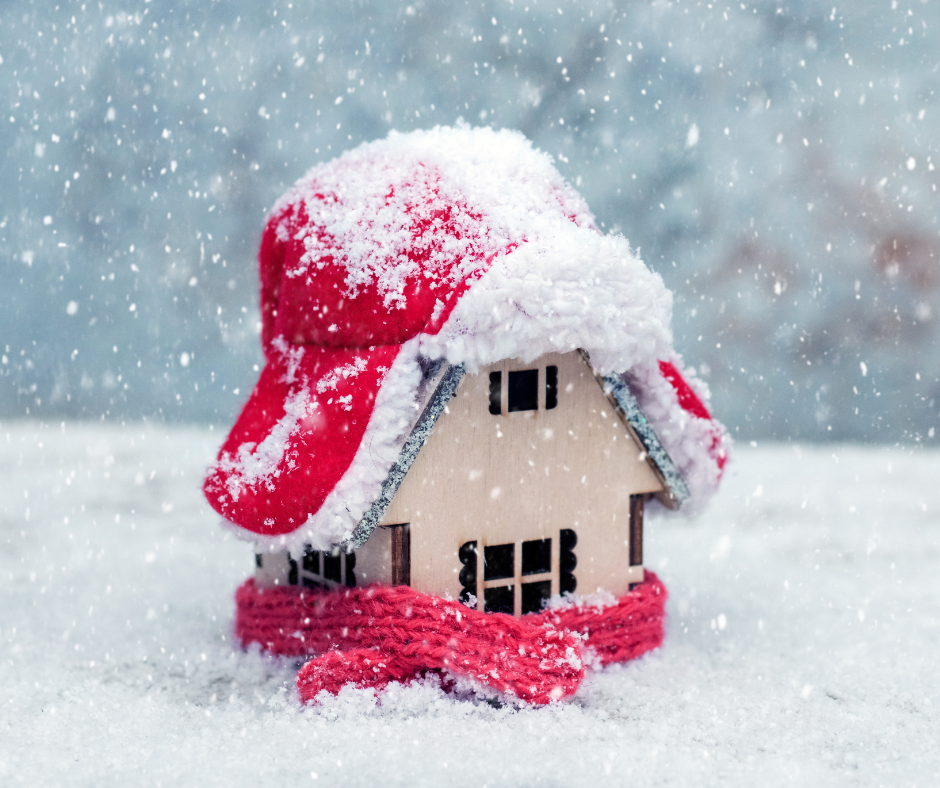Cold Weather, Warm Home
Mid-Season Tips to Keep Your Home Safe All Winter Long

Now that the colder weather has officially settled in—and most of us have already turned the heat on—it’s the perfect time for a quick mid-season home check. Winter can be tough on Kansas homes, but a few simple steps can help keep things running smoothly and prevent the kinds of surprises that often lead to insurance claims.
Here are some deeper, practical ways to protect your home as temperatures continue to drop:
1. Give Your Heating System a Mid-Season Checkup
Even if your furnace has been running for weeks, it’s worth taking another look.
- Replace or clean your air filter (most need it monthly during heavy use).
- Listen for unusual noises or short cycling.
- Make sure vents and returns aren’t blocked by furniture or holiday décor.
If anything feels “off,” a quick tune-up now can prevent a breakdown on the coldest day of the year.
2. Keep an Eye on Indoor Humidity
Dry winter air can cause cracking wood, static shocks, and uncomfortable dryness—but too much humidity can lead to condensation and mold.
- Aim for a humidity level between 30–50%.
- Wipe condensation off windows; prolonged moisture can damage window frames.
- Use humidifiers or dehumidifiers as needed to stay balanced.
3. Double-Check Drafts & Insulation
By now, you’ve probably felt where the cold air sneaks in.
- Add temporary weatherstripping around doors or windows that still feel drafty.
- Close the fireplace flue when not in use.
- Use thermal curtains to help keep warm air indoors.
Small fixes can make a noticeable difference in comfort and heating costs.
4. Inspect High-Risk Areas for Frozen Pipes
Even if you prepped earlier this fall, mid-winter is when pipes are most vulnerable.
- Check under sinks along exterior walls for cold drafts.
- Consider leaving cabinet doors cracked during cold snaps.
- Let faucets drip overnight when temperatures fall into the danger zone.
A little vigilance now is far easier than dealing with water damage later.
5. Do a Roof & Gutter Quick Check After Heavy Leaves (or Early Snow)
Leaf fall is mostly over—but gutters may still be full.
- Look for sagging spots or overflowing areas.
- Clear debris so melting snow and ice have a place to go.
- Check for shingles that appear lifted or damaged after high winds.
These small checks help prevent ice dams and leaks later in the season.
6. Test Your Safety Gear
This one is always worth repeating.
- Change batteries in smoke and carbon monoxide detectors.
- Make sure space heaters are used safely and away from blankets or furniture.
- Confirm that fire extinguishers are accessible and fully charged.
Safety devices work hardest this time of year—make sure they’re ready.
7. Take a Few Minutes to Review Your Home Insurance Coverage
Winter is one of the most common seasons for home claims due to frozen pipes, roof leaks, and storm damage. A quick review of your coverage can help ensure you’re protected. If you’ve made upgrades or changes this year, now is a great time to update your policy.
Our team is always happy to walk through your home coverage and answer any questions—so you can enjoy a warm, comfortable winter with peace of mind.














